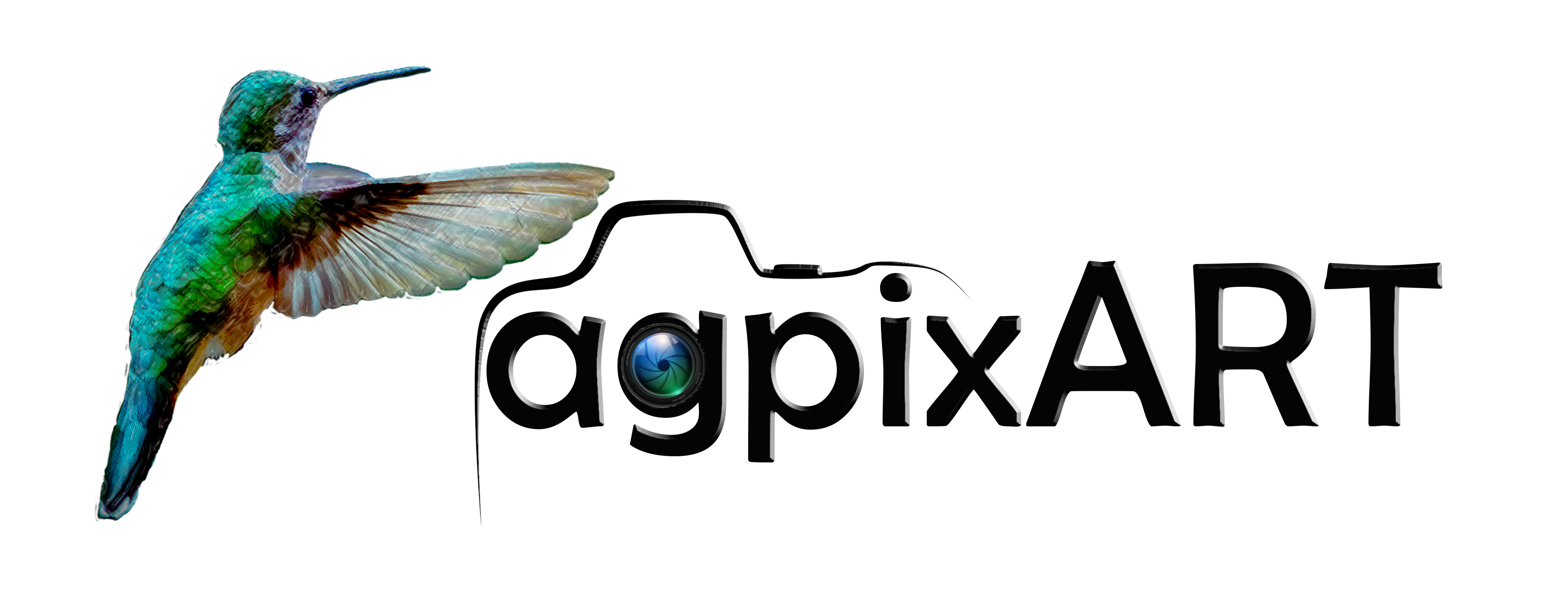Elizabeth Bay & Tagus Cove, Isabela
Elizabeth Bay and Tagus Cove are two stunning visitor sites on Isabela Island, the largest in the Galápagos Archipelago, offering unique wildlife, geological features, and activities.
Explore Elizabeth Bay & Tagus Cove, Isabela Island
Elizabeth Bay – Mangrove Paradise
Elizabeth Bay, located on the west coast of Isabela Island, is a marine visitor site accessible only by boat, typically via a panga (small motorized dinghy) ride. No landing is permitted, making it a pristine area focused on marine and coastal exploration. The bay features a mix of mangrove forests, lava fields, and small islets, creating a rich ecosystem teeming with wildlife.
Tagus Cove – Pirate’s Cove
Tagus Cove, located on the northwestern coast of Isabela Island across from Fernandina Island, is a sheltered deep-water bay with historical significance as a pirate and whaler hideout since the 1800s. Named after the British ship Tagus in 1814, the cove is known for its volcanic landscapes, marine life, and historical graffiti carved into cliffs. The graffiti reflects centuries of maritime activity, offering a glimpse into the Galápagos’ pre-conservation era. Charles Darwin visited in 1835 during the HMS Beagle voyage, noting the area’s geology and wildlife.
Good To Know…
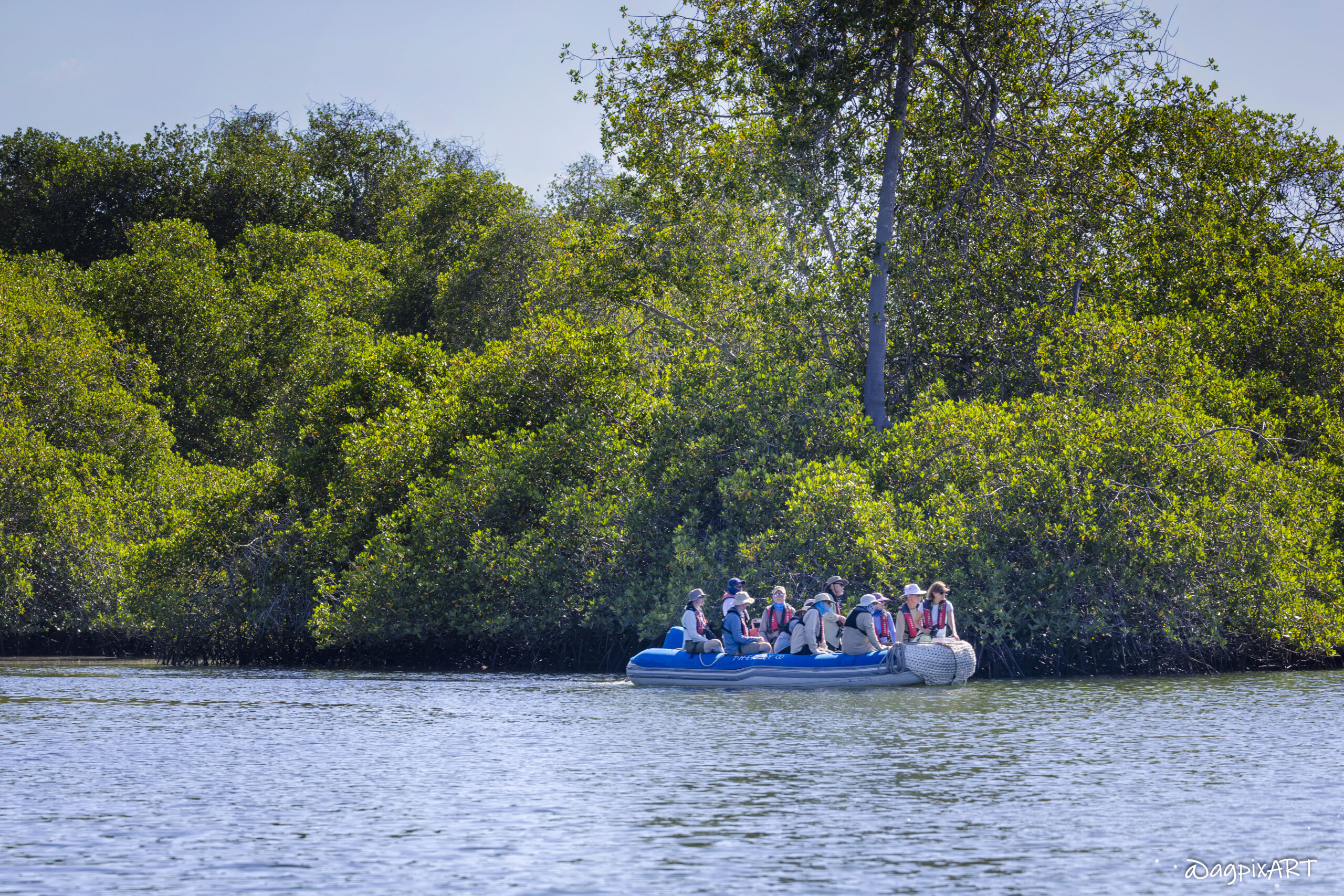
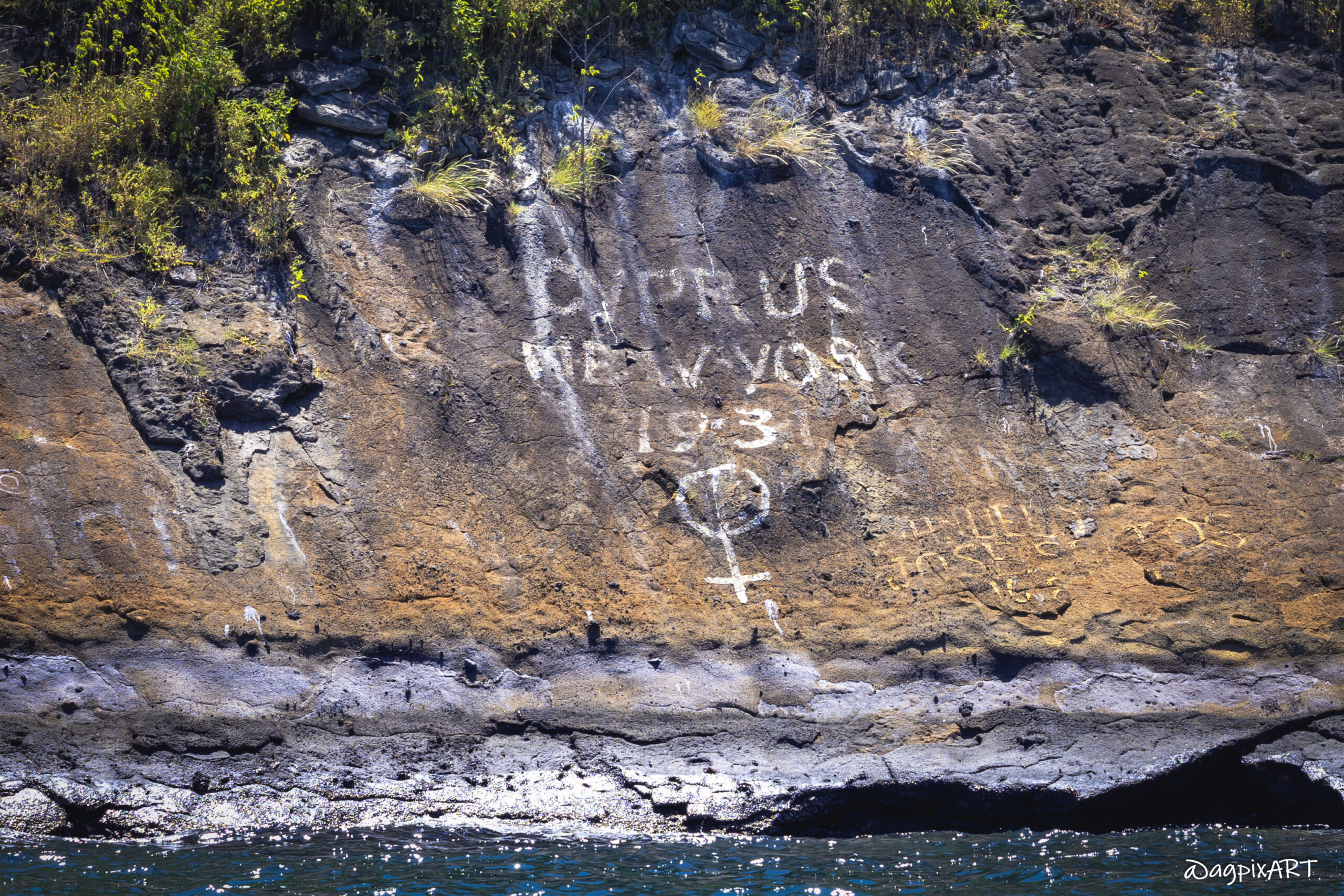
What-to-See
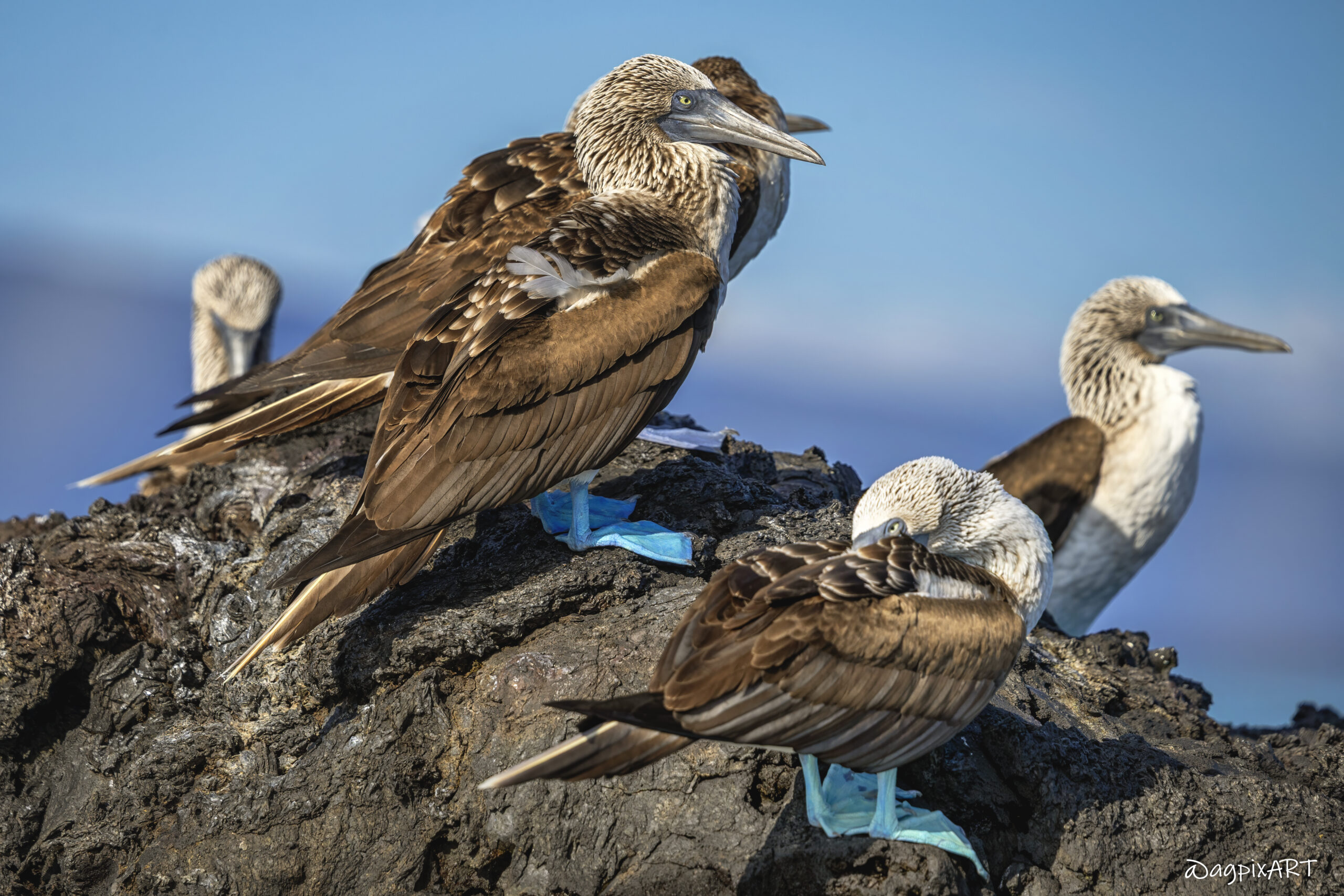
Blue-Footed Boobies
Blue-footed Boobies (Sula nebouxii) are iconic Galápagos seabirds and can be spotted in Elizabeth Bay, particularly around the Marielas Islets and rocky outcrops near the mangroves. Their name derives from the Spanish word “bobo” meaning foolish or clown-like, referencing their comical waddle and bright feet. Their bright turquoise or blue feet are more vibrant in healthy, breeding adults. Males typically have brighter feet, while females have slightly duller ones. They have a white body with brown wings, a grayish-blue beak, and a distinctive brown patch on the chest. Juveniles have duller, grayish feet and mottled plumage. They are incredibly agile in the air and can dive into schools of fish from heights as high as 100 feet, as well as catch flying fish mid-air.
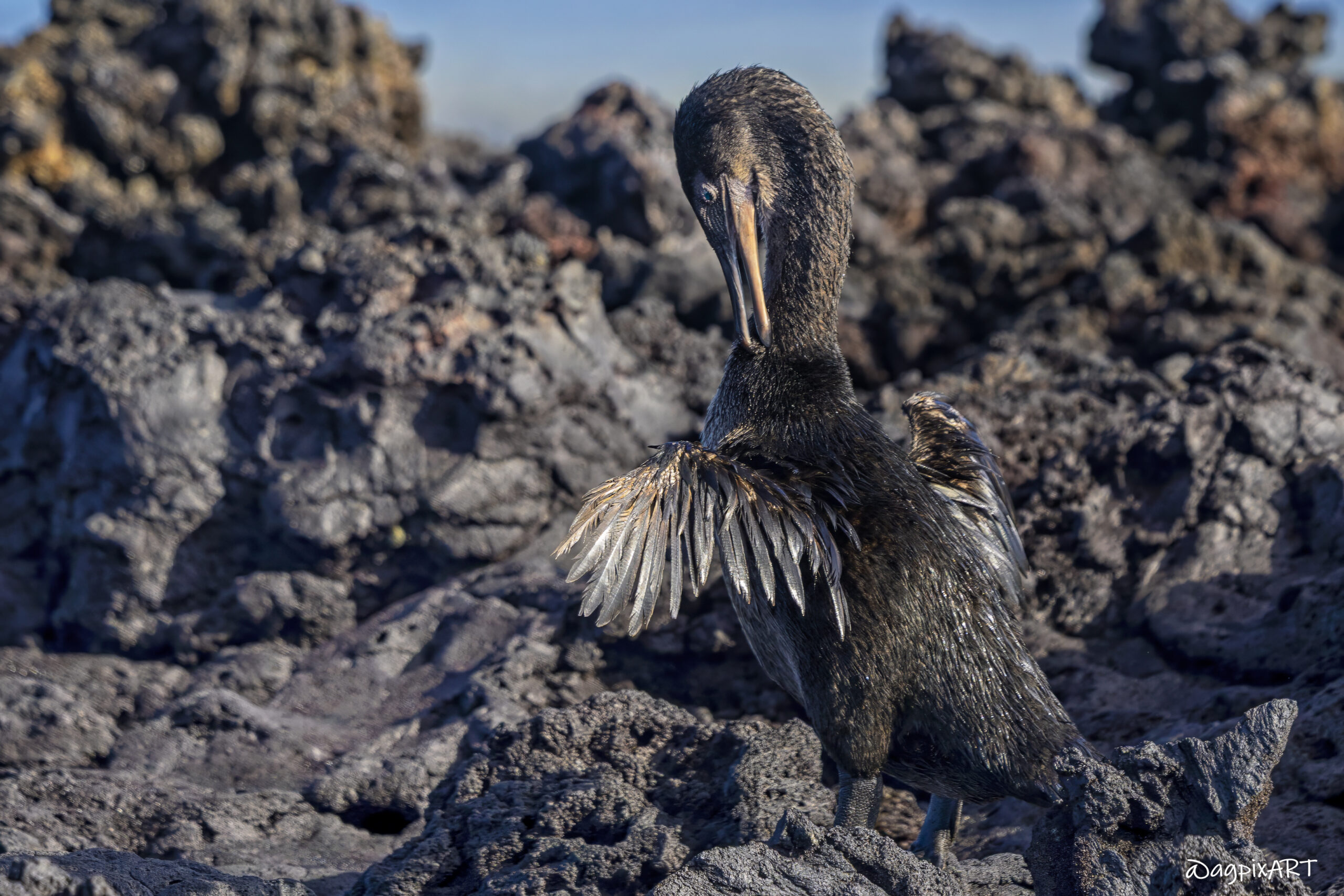
Flightless Cormorants
The endemic Flightless Cormorant (Phalacrocorax harrisi) found only on Fernandina and Isabela, performs a quirky courtship here. Males offer females seaweed “gifts” and swim in synchronized zig-zags to impress their mates. As the only cormorant species in the world that has lost the ability to fly, it’s a striking example of evolutionary adaptation. Dark brown to black, with a glossy sheen in sunlight. They have bright turquoise eyes, a long, hooked bill, and strong, webbed feet for swimming. Small, vestigial wings (about 1/3 the size of a typical cormorant’s) are useless for flying but used for balance. They can dive up to 70 meters deep, chasing prey with agility that rivals marine iguanas. After diving, they perch on lava rocks, spreading their tiny wings to dry.
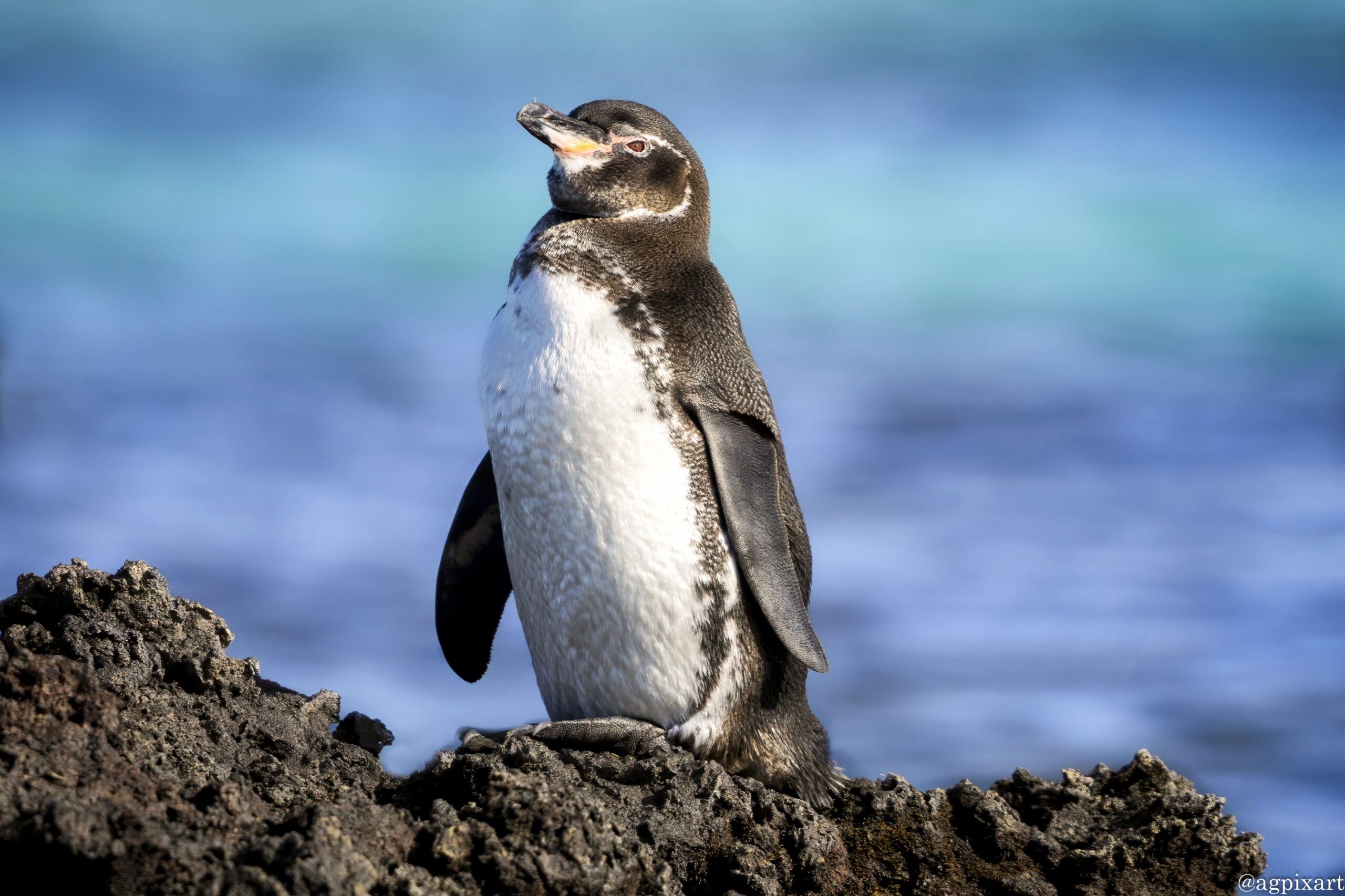
Galápagos Penguins
The Galápagos penguin (Spheniscus mendiculus) is one of the most unique species in the Galápagos due to its status as the only penguin species living north of the equator. They are only about 19 inches tall, weighing 4–6 pounds, making them one of the smallest penguin species. They have black and white plumage with a distinctive white border around the face and a black band under the chin. Often seen swimming swiftly near the surface or diving for small fish like sardines and anchovies. On land, they perch on rocks or rest in small groups, sometimes alongside sea lions or marine iguanas. They thrive in the cool waters of Isabela’s west coast, influenced by the nutrient-rich Cromwell and Humboldt Currents. Galápagos penguins are endangered, protected under Galápagos National Park rules.

Galápagos Brown Pelicans
Brown pelicans (Pelecanus occidentalis urinator) are famous for their dramatic plunge-dives, diving from up to 60 feet (18 meters) into the waters to scoop up fish. Their stretchy throat pouch can hold up to 3 gallons (11 L) of water and fish. They feed on small fish like sardines.
During mating season (peaking in warmer months), males develop vibrant reddish or yellowish hues on their pouches.
The brown pelicans are a unique Galápagos subspecies, slightly larger than mainland cousins, adapted to the island’s rich marine environment.

Striated Heron
The striated heron (Butorides striata), often confused with the lava heron, is less widespread across the islands than its darker-plumaged counterpart but thrives both in Elizabeth Bay’s mangrove-rich ecosystem and rocky coastlines of Tagus Cove. This diminutive heron, weighing approximately 2.1 kg and standing about 35 cm tall, is among the smallest of its kind, with males slightly larger than females. Its brown-streaked plumage, accented by a glossy green back and a black cap during breeding season, provides camouflage among the mangroves and volcanic rocks.
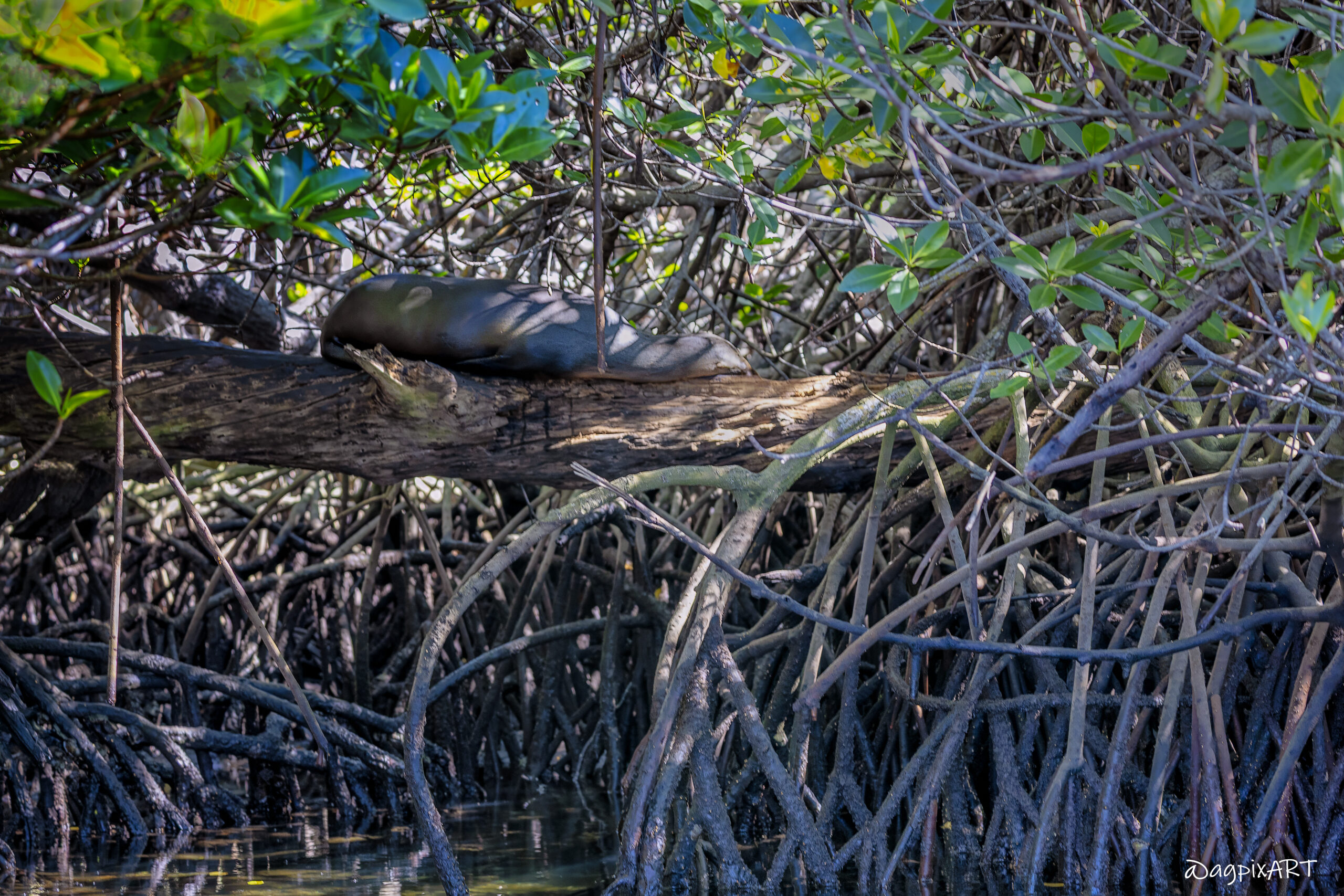
Galápagos Sea Lions
Sea Lions (Zalophus wollebaeki) are called “Tree Lions” for their tendency to rest or “haul out” on low-hanging branches of mangroves or rocky outcrops in Elizabeth Bay. Males grow up to 2.3 m long and 200–400 kg, with a muscular build and a thick neck. Females are smaller, reaching 1.8 m and 60–120 kg. Pups weigh 6–8 kg at birth. Sleek, chocolate-brown coats shimmer when wet, fading to a lighter tan when dry. Streamlined bodies, strong flippers, and external ear flaps (unlike true seals) make them agile swimmers. They are highly social, forming colonies with loose hierarchies.
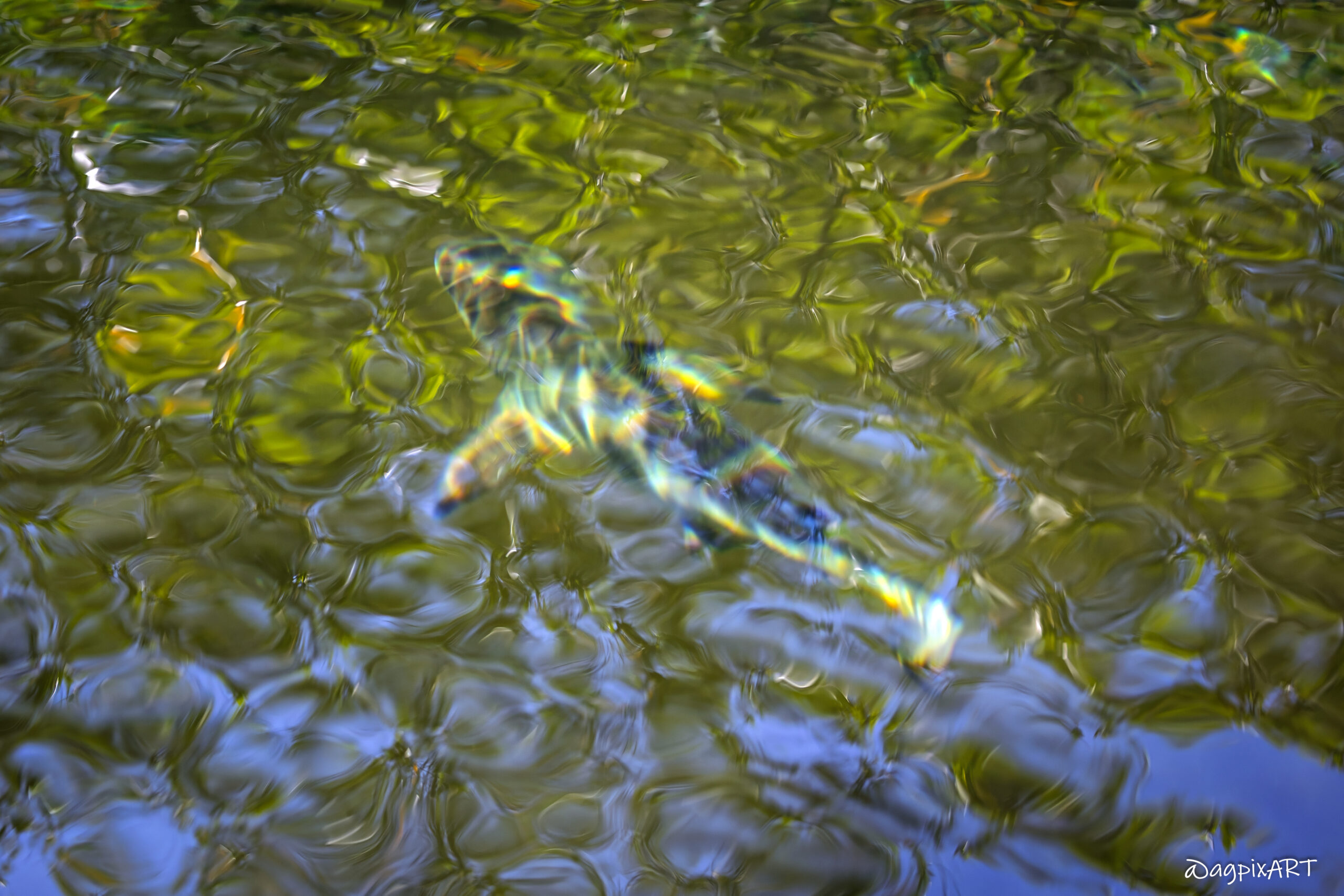
White-tip Reef Sharks
Named for the bright white tips on their dorsal and tail fins, these sharks (Triaenodon obesus) are easy to spot even in the murky waters in Elizabeth Bay. Unlike more active predators, white-tip reef sharks are docile and often seen resting in groups on the ocean floor or in shallow caves. They come alive at night, hunting small fish, crustaceans, and octopuses in the Galápagos’ reefs. Growing to about 5–6 feet (1.5–1.8 meters), their slim, agile bodies allow them to navigate tight spaces in reefs or mangroves. They can pump water over their gills while resting, allowing them to “breathe” without swimming. These sharks pose no threat to snorkelers, making them a safe and exciting sight for visitors.
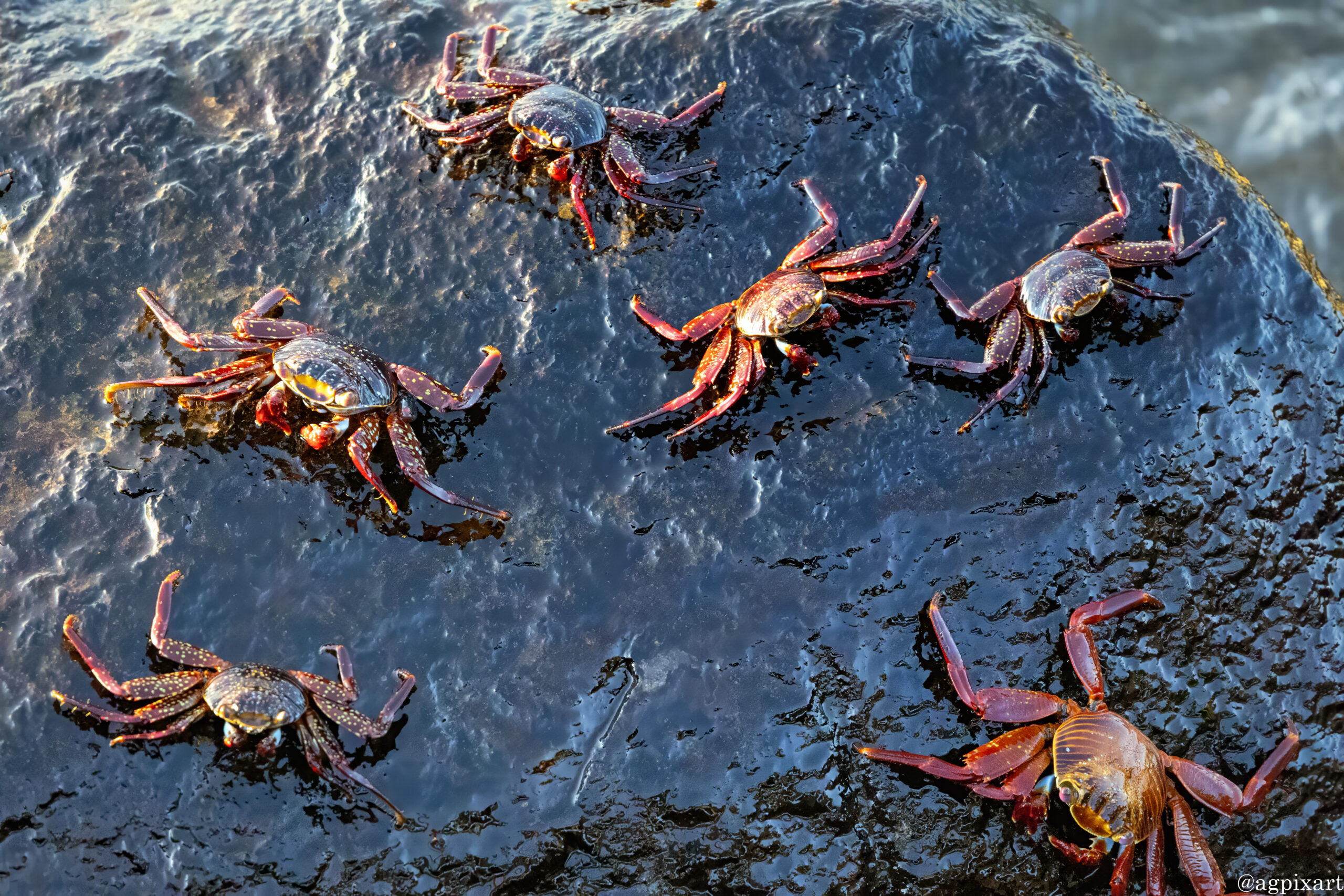
Sally Lightfoots Crabs
Sally Lightfoot Crabs (Grapsus grapsus) commonly scavenge on on the rocky coastlines of Tagus Cove. Large adults are vibrant red, orange, or blue with a pale white or blue underbelly, standing out against black lava rocks. Juveniles are dark brown or black with red spots for camouflage to avoid predation. They have five pairs of legs, with front claws (chelae) for grasping food. Their broad, flat legs allow agile movement, often described as “spider-like.” These crabs are opportunistic omnivores, feeding on red and green algae, dead fish, bird droppings, sea lion placenta, baby sea turtles, and even other crabs. Known for their incredible agility, they run in four directions, leap, and climb vertical slopes.
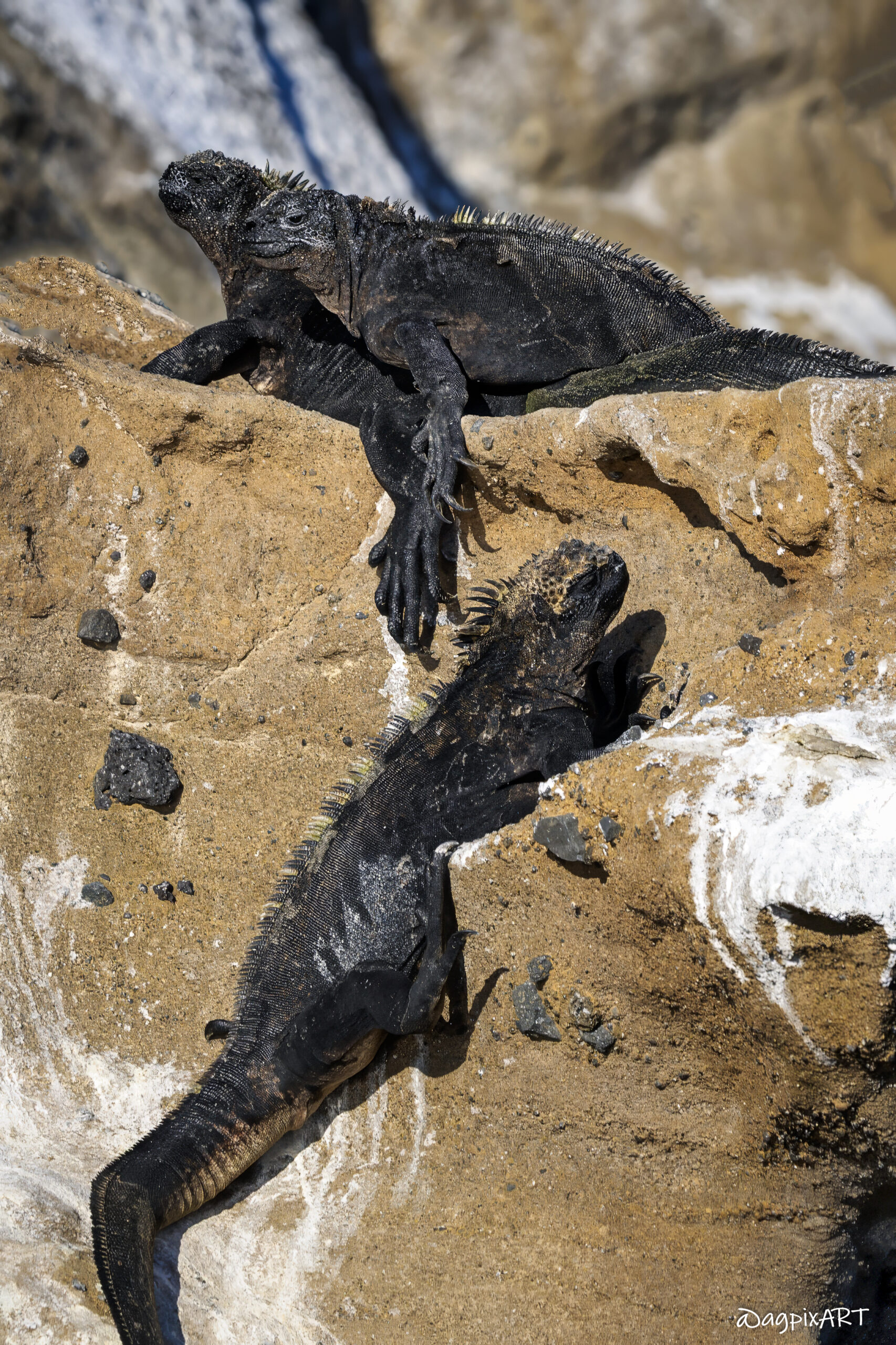
Marine Iguanas
Marine iguanas (Amblyrhynchus cristatus) like to lounge on the rocky coastlines of Tagus Cove. They are nicknamed Galápagos Dragons for their prehistoric look and spiky crests and they are the world’s only seafaring lizards with clawed feet and a laterally flattened tail that aids swimming. Salt glands expel excess salt via sneezes, creating white “wigs” on their heads. They need to thermoregulate—basking on sun-warmed volcanic rocks to raise their body temperature after foraging in the cold ocean waters for algae, their primary food source.
Tagus Cove, provides an ideal habitat, as the dark lava rocks absorb heat, and the surrounding waters are rich in marine algae.
Instructions for photo proofing and comments:
Left-click on the photo to access options for title information (i), leave comment, or mark the photo(s) as the favorite. The option to submit the selected as favorite photos is under “Submit proofs” button under photo gallery.
